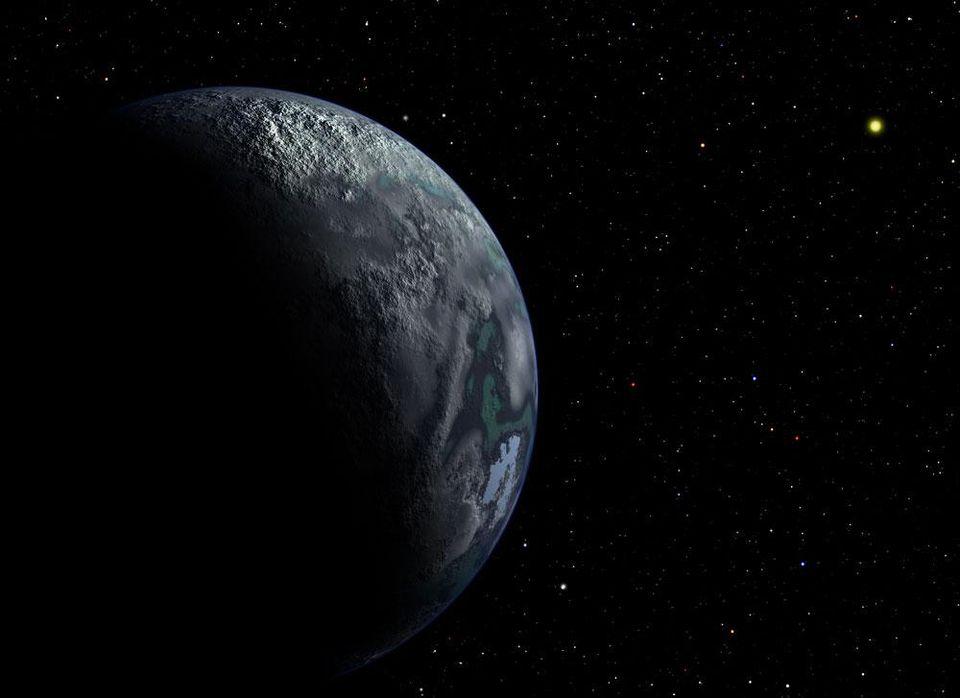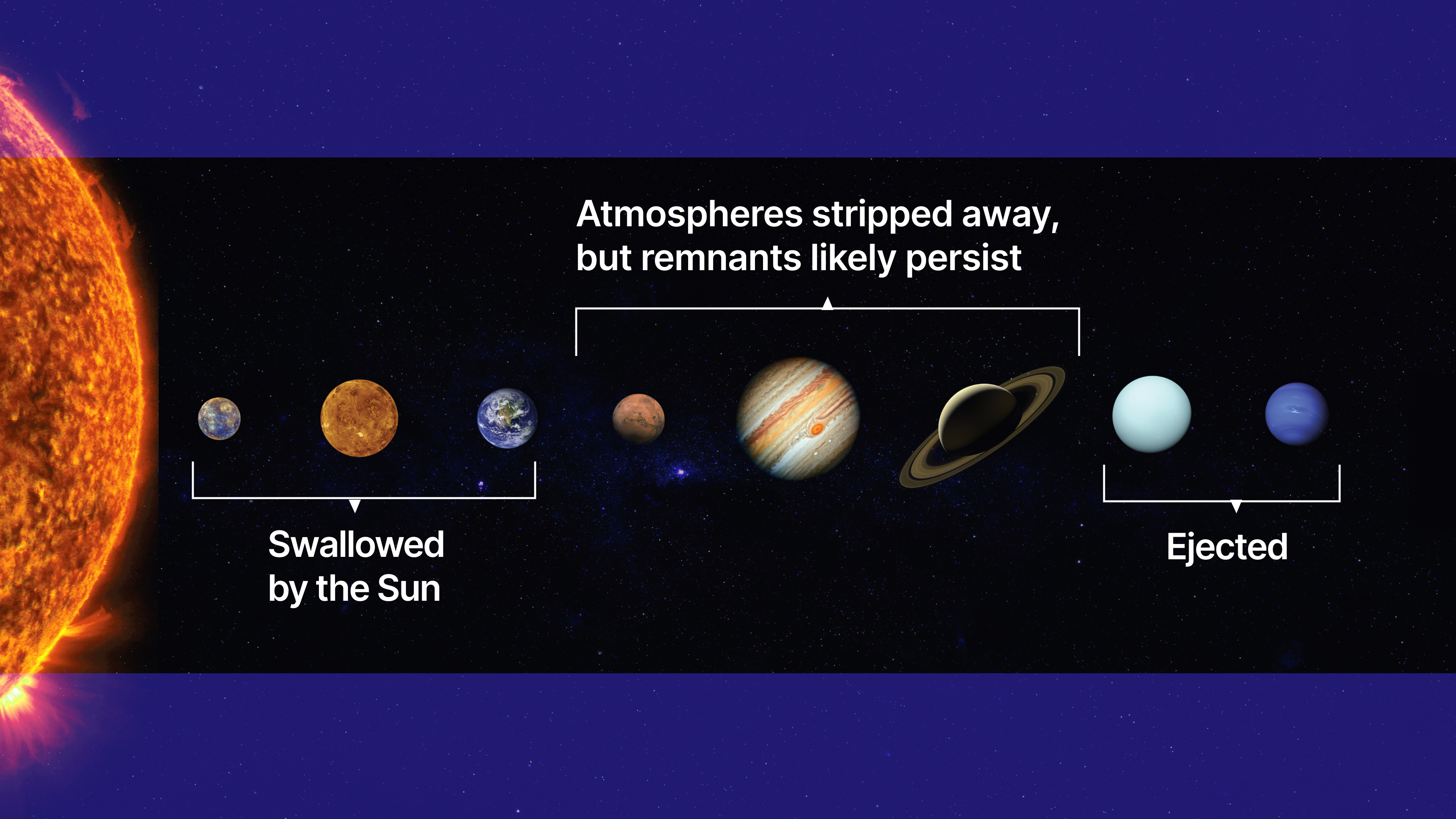When will the Earth meet its demise?
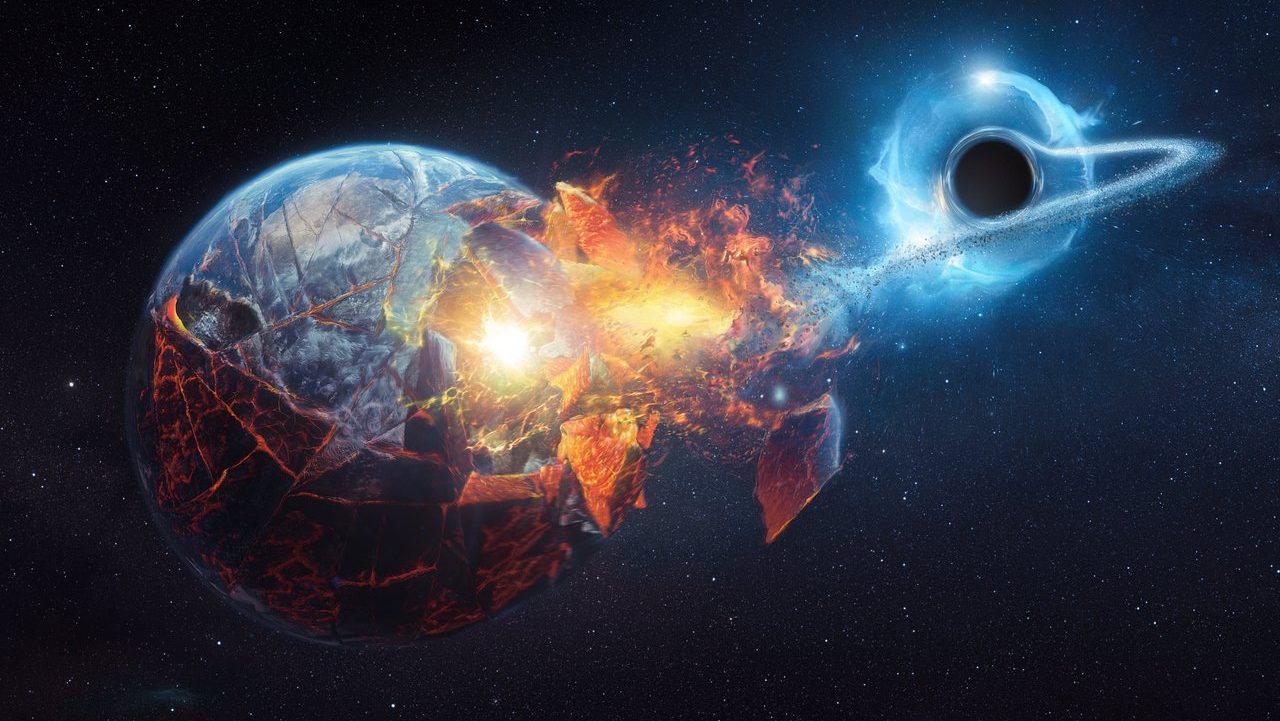
- The Earth has been around for some 4.5 billion years, and has been inhabited by living organisms for nearly all of natural history.
- Humanity, however, has only come of age recently and likely won’t be around for long on cosmic timescales, as a few million years is likely the upper limit.
- Nevertheless, there are many different “ends” in store for our planet, in both the near and far future. Ultimately, our demise, however you define “our,” is assured.
If you have ever read the news, you’ve likely seen stories that announce our impending doom, usually brought on by some apocalyptic event that strikes fear into our imaginations. Various incarnations of the reported end of the Earth has come in a variety of forms, including from:
- Nibiru,
- Planet X,
- The Mayan calendar apocalypse,
- The rapture,
- A new great flood,
- An unstoppable fire,
- A biblical prophecy come to life,
- A supervolcano,
- Or even a rogue asteroid or comet slamming into us.
Every few years, or maybe even every few months (depending which corners of the internet you’re perusing), a new story, speculation, or conspiracy will go viral, claiming that the end of the world is near. While some claims are very specific; in general these claims are more vague, making them difficult to disprove or debunk.
Yet we don’t live in a world where myth and mysticism dominate our thinking; we know that we can comprehend all that’s known, as well as an enormous amount of what’s to come, using the predictive power of science. Based on what we know today, we can concretely predict that there are four ways the Earth will meet its eventual end, and each and every one of them will eventually occur. Here’s how our living planet, home to all the life in the cosmos that we presently know, will meet its ultimate end.

1.) The extinction of humanity
Despite the dreams of immortality that many envision, both for themselves and for our species, our extinction is an inevitability. Although there are over eight billion humans on Earth (with that number continuing to grow) today, humans have only been around in our current form for a few hundred thousand years, with the entirety of the great ape family coming into existence only around 20 million years ago. Evolution may be slow to occur in our species on the timescale of a single human lifetime, but over millions of years, it’s inevitable.
As the Earth changes, the pressures on different species to survive will change as well, leading to speciation and selection events, all while random genetic mutations occur. Some mutations are beneficial to surviving whatever pressures exist on the organism at a specific moment in time, and those are the genes that are most likely to get passed on to the next generation. It’s also important to note that diversity and adaptability are key traits that allow for some organisms to survive while others that are less diverse and adaptable die out, and that a less diverse and adaptable population is more susceptible to complete extinction.

Whether the offspring of humanity millions of years from now remain sentient, as we know it, is beside the point; the point is that millions of years from now, even if the descendants of humans are still around, they won’t be recognizable as humans any longer. Humans themselves face pressure from all sorts of factors, including:
- a changing planet with limited resources,
- from other humans (in the form of war, as well as nuclear, chemical, or biological weapons),
- and from the natural world (in the form of disease).
It has been argued by many, for a very long time, that we are our own greatest existential threat, as we may just be another in a long line of organisms that consumes resources mindlessly until we drive ourselves to extinction. We don’t have to rely on an out-of-this-world catastrophe, like a massive asteroid strike, to drive us to extinction. Whether such an event occurs or not, the eventual demise of humanity is inevitable. Whether we have descendants that survive or not is immaterial; we will go extinct on this world eventually, and our descendants eventually will as well. On geological and astronomical timescales, this is likely to happen sooner than later, and will be the first “end of the world” for us: in very personal, human terms.
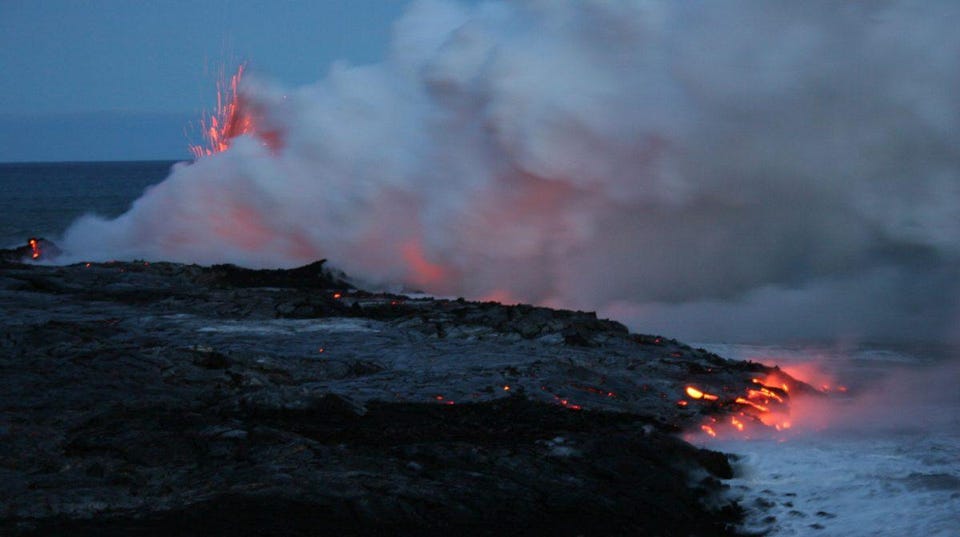
2.) The boiling of Earth’s oceans
It’s such a fortunate cosmic coincidence that our planet is the size and mass it is, with the atmosphere it possesses, at the distance it is from a star exactly as massive as our own. If we were too small and low in mass, our atmosphere might have been stripped away. If we were too close to the Sun, the temperatures may have been too great for liquid water to persist on the surface. And if we were too distant, an early, frozen Earth may have prevented life from getting its early start. Only the right combination of all of these parameters has given us a life-supporting planet with copious amounts of liquid water directly at the surface.
If any of these properties were significantly different from what they actually are, it’s arguable that the diversity and variety of life that our planet possesses simply wouldn’t be here today. And yet, with these conditions that we have on our planet, for billions of years, Earth has been an ocean-covered world. Simple life first originated in the seas and then became complex, with a wide variety of life forms only coming onto land in the relatively recent past. Yet, thanks to the future evolution of our Sun, we can be certain that the giver of all life on our planet, the oceans, won’t persist forever. As helium builds up in the Sun’s core, the region in which nuclear fusion occurs, the core region itself expands: with dire consequences for us.

Over time, as the Sun’s core begins to exhaust the hydrogen available for nuclear fusion in its core, the core is compelled to contract. Because this contraction is adiabatic in nature, with little-to-no heat transfer between the core and the outermore layers, this causes the Sun to internally heat up and the core to expand, where now two things have occurred:
- the temperature at the very center of the Sun increases,
- and the region that defines the core, at a boundary of 4 million K, has increased in size,
both of which increase the Sun’s overall rate-of-fusion and overall energy output. This causes the Sun to become more luminous and to emit more power as time goes on. After another one-to-two billion years have passed on Earth at the most, the amount of energy the Sun gives off will increase to a critical point: high enough that the amount of energy hitting a water molecule in Earth’s ocean during the day will be sufficient to boil it.
As the oceans boil and the atmosphere fills with water vapor, greenhouse gas effects will take over, causing Earth’s temperature to rise catastrophically. Our planet will become more like Venus than like Earth today, becoming totally inhospitable to life on the surface. Only, perhaps, a few simple organisms will survive high in the cloud-tops, but these too will go extinct as the atmospheric particles themselves become easy to strip off into outer space. When these last biological reactions cease to occur, we can officially declare that life as we know it has ended on our world. The cosmic experiment of complex, differentiated organisms will inevitably reach a natural end, even if nothing else occurs to end it prematurely.
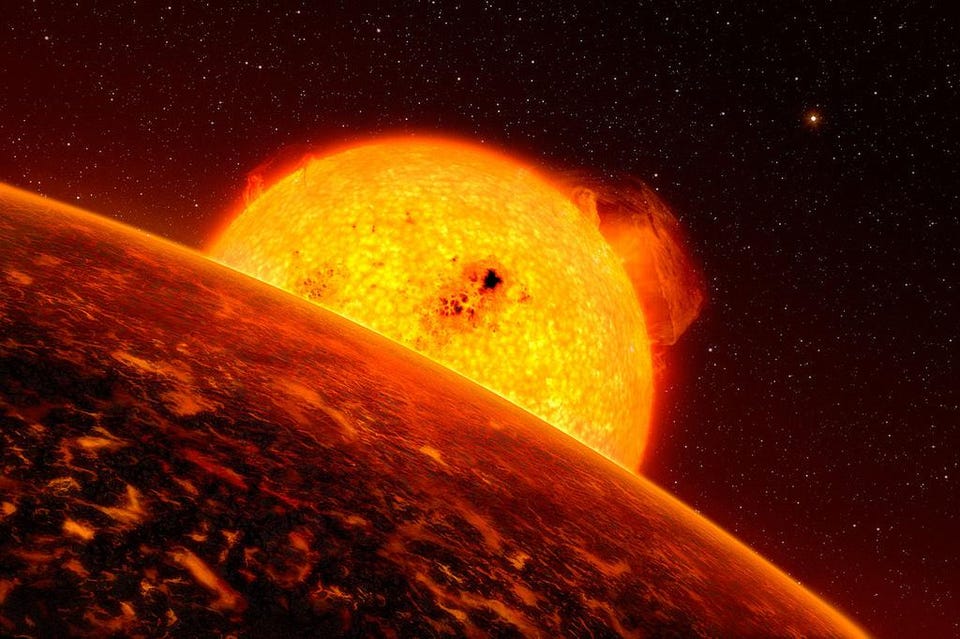
3.) Reduction to a barren rock
For billions of years, Earth will be doomed to have a thick, heat-trapping atmosphere: the kind that leads to inferno-like conditions on the surface, similar to what Venus is like today. But all the while, the Sun doesn’t simply remain constant in terms of its solar output; it continues evolving. If you think that the idea of Earth’s ocean’s boiling heralds the arrival of a bad day, now imagine the prospect of:
- having every atom of atmosphere ejected from our world,
- everything that ever lived on the surface being reduced to charred ash,
- and the geological record of everything that all living creatures left blasted into dust?
With enough heat and energy, that’s exactly what would happen to any world, with Mercury, the closest planet to the Sun, being a prime example of a place where that has already occurred.
In another five-to-seven billion years, this is exactly what will happen to planet Earth, as the Sun fully runs out of hydrogen fuel in its core. Prior to that event, the Sun will continue heating up and expanding, reaching perhaps 2.5 times its present brightness and increasing in radius by about 50%. But when it runs out of its core hydrogen, the Sun’s core contracts and heats up, causing the outer layers of the star to swell. As it expands, it cools, but also becomes far more luminous, signaling its evolution into a subgiant star. As the core continues to contract and heat up, hydrogen fusion begins in a shell around the core, resulting in the Sun’s energy output increasing to somewhere between 20 and 50 times its present value.

These conditions place Earth’s atmosphere at risk for something that would only be possible for a planetary atmosphere much closer to our Sun (or any normal star) today: the photoevaporation of its atmosphere. Once the atmosphere is gone, there’s nothing to protect the surface of Earth from irradiation: both from the Sun’s radiation, solar particles, and the continual bombardment of cosmic rays. Over hundreds of millions of years, our planet will be stripped bare and then baked. Meanwhile, the Sun will continue to evolve, swelling to almost a hundred times its current diameter and becoming thousands of times as luminous as it is today, evolving into a true red giant star.
During these stages of stellar evolution for our Sun, a number of important changes occur. The Sun begins pulsing and winds intensify, leading to the Sun expelling a large amount of hydrogen as it swells. As that hydrogen passes by the planets in their orbits, they exert a frictional force on those worlds, causing them to inspiral and their orbits to decay. On the other hand, because the Sun now has less mass, the reduced gravitational force causes these planetary orbits to spiral outward, counteracting that effect. Meanwhile, the Sun swells in size. First Mercury gets devoured by the red giant Sun, then Venus. Earth, meanwhile, spirals out by a net amount of about 10% of the current Earth-Sun distance, or about 15 million km (9 million miles) more distant. The Sun, however, is expected to swell to about 115% of the current Earth-Sun distance, leading to the possibility that Earth will be swallowed, too. Bringing us to the final way that the Earth will likely meet its demise…
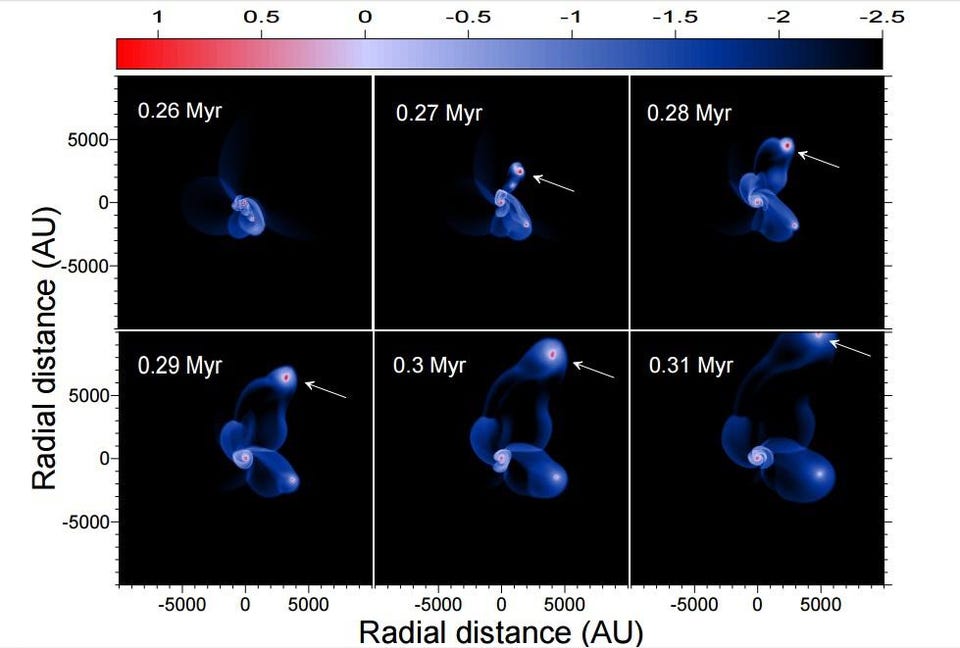
4.) Swallowed or ejected?
Even though it’s been cleared of life, had its oceans boiled away, and then charred and photoevaporated, the question of whether planet Earth will continue to persist or not remains a cosmic unknown. Projecting the far future of the rocky planets in our Solar System is an exercise in chaos, as in about 1% of simulations from now until the Sun becomes a red giant, at least one of the rocky planets gets ejected or hurled into the Sun from gravitational interactions. Although it’s not the odd-on favorite, it remains possible that the Earth will either get pushed to a higher orbit or ejected from the Solar System entirely, perhaps saving it from its likely fate of being swallowed by the red giant phase of the Sun.
Still, getting swallowed is the expectation, and that will be the most likely “final end” of planet Earth, as the remnants of our planet will likely be strewn throughout the final remnants of our Sun: a planetary nebula, which returns matter to the interstellar medium, and the white dwarf that our Sun will contract down to after its death. It would be as though the entire world was taken apart, atom-by-atom, and incorporated into the hot, dense plasma that will be our Sun. Parts of Earth, in the form of those atoms, electrons, and bare atomic nuclei, will be ejected into interstellar space, while other components will remain part of the white dwarf that our Sun’s core contracts down to.
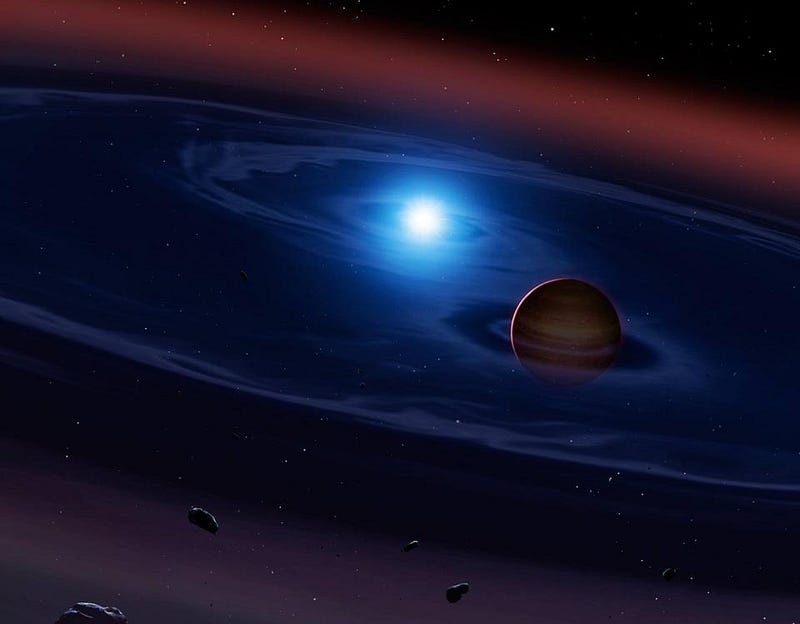
But in the event that Earth survives, and either remains in orbit around the white dwarf remnant of our Sun or gets ejected into interstellar space, it likely faces a further end from one of a number of possible sources. Over time, quadrillions of years worth of time, cosmic rays will continue to irradiate our planet from all across the sky, further baking and charring our corpse of a planet. It will remain intact as a solid object, orbiting throughout the Milky Way irrespective of whether it remains bound to our central, stellar corpse, until one of the following things happen:
- An object collides with the Earth, either destroying it or engulfing it, depending on the size and speed of the collision. Our galaxy is a very sparse place, but we’ve got all the time in the Universe.
- A massive object passes close by the Earth, either gravitationally ejecting it from the Solar System and the galaxy entirely, where it wanders in obscurity throughout the empty cosmos for eternity, or tidally disrupting it: tearing it apart into its constituent particles.
- Or it may forever remain bound to the Sun’s corpse, and slowly, over countless orbits, spirals into our stellar remnant via the emission of gravitational waves. After some ~1026 years, it will be swallowed by the black dwarf that dominates whatever’s left of our Solar System.

However it occurs, this much is certain: the world will most definitely end, and will end in each of these four ways in successive order:
- first humanity will go extinct, including all of our descendants,
- then our planet’s oceans will boil and all life will come to an end on it,
- then we will be reduced to a barren, irradiated, thoroughly baked bare rock,
- and finally, our very planet itself will be destroyed, either swallowed by the Sun (or its corpse), devoured by an interstellar interloper, or ejected into the deepest depths of intergalactic space.
It is not mere speculation that all four of these ends will come to pass, but rather a consequence of the robust predictions we can make because we understand how planets and stars and the galaxy evolves: the pinnacle of our scientific achievements.
But while the far future of Earth is known, the near-term future is much less certain, as it’s up to us to create it. What will our choice, collectively, be as a species? Ideally, we’ll guide our planet’s future with our feet firmly planted in scientific reality, using the best knowledge and most successful theories we have to guide us, using our capabilities to ensure the safety, security, freedom, and prosperity of all humanity. It’s the ultimate dream of a scientifically literate society, and the one hope we have of pushing out that first “end” — the extinction of humans — as far into the future as possible.
